3 Simple Steps to Make Every Meal Healthy and Satisfying Using #GPF
*Click here if you'd rather listen to this blog post on my podcast!
There's a misconception that nutrition has to be complicated.
And rightfully so! There's so much mixed information floating around out there on the Interwebs.
Should we be counting calories or macros, or intuitively eating? Are carbs the enemy? Will fat make you fat? How much protein should I be eating every day?
It's enough to make ANYONE confused and ultimately discouraged from making any healthy lifestyle changes at all.
Through years of coaching people about nutrition (and in my own personal experience), I realized most people have an all-or-nothing mindset. They're either following a meal plan and eating only broccoli, brown rice and boiled chicken, or they're going balls-to-the-wall and eating a whole pizza, 10 Twinkies and a tub of ice cream.
I knew I needed to create a simple 'formula' for my clients to understand how to eat for hunger and health, which is how I came up with "GPF."
Image courtesy of Downshiftology
WHAT IS GPF?
GPF stands for greens, protein and fat -- and these are what lay the foundation for creating a healthy meal every time you sit down to eat (yes, even at a restaurant).
The combination of the fiber in the greens, the protein, and healthy sources of fat help to turn off hunger hormones, signal to your body that it's full, increase satiety, and help you actually stay full between meals so that you're not needing to eat mini meals or snack every 2-3 hours! (Because let's be real, the busier we are, the less time we have to spend eating all. day. long.)
I notice that when I eat GPF-style, I'm able to eat three larger meals throughout the day: breakfast, lunch and dinner -- sometimes with a snack between lunch and dinner, depending on how late dinner is.
THE BENEFITS OF GPF
Our bodies are incredible.
When we sit down to eat a meal, there are many hormones and systems working together without us even having to think about it.
Your body has 8 hunger-related hormones, including insulin, leptin, ghrelin, peptide yy, neuropeptide y, cortisol, dopamine (the reward hormone), and cholecystokinin. #science
In an ideal climate, these hormones work together harmoniously and balance each other out, so that we never feel starving and eat more than is necessary for proper functioning.
However, many of our bodies are not in an 'ideal climate': we're stressed at work or home, lacking sleep, produce too much insulin from overconsumption of carbohydrates, consume too much caffeine, or we're over-exercising.
ALL of these things can affect these hormones, making it harder for our body to work FOR us (especially if our goal is weight loss or maintenance) - even if we think we're doing everything 'right' and eating 'healthy.'
When we understand these hunger hormones and how to shut them off, you don't have to fight your body NOT to eat. You can simply eat until you're satisfied, and go about your day without having to obsess about food.
You don't have to spend all day wondering when you're going to eat again because you're starving from eating chicken and broccoli an hour ago. You don't have to waste time tracking every single morsel of food in an app (that has no idea about your unique body chemistry, btw. Also, if you're a busy person, this can be a huge waste of time and add tons of unnecessary stress and guilt when you don't 'hit your numbers'. not a fan.)
That, to me, is true food freedom.
Eating #GPF makes it easier to eat for hunger and health, versus out of stress or emotion.
You can eat intuitively, but with light structure that helps you look and feel your best. (Because let's be real - if I've been eating tons of bagels and donuts, yo girl will 'intuitively' just want more bagels and donuts).
#GPF helps break the all-or-nothing mindset surrounding food by focusing on ADDING more of the good stuff, instead of subscribing to the 'do not eat' or 'can never have' lists that we're all so accustomed to if we've ever dieted before.
And understanding the science behind WHY you're choosing to use the #GPF formula for your meal makes it a lot easier to make healthy choices.
Photo courtesy of the National Institute on Aging
HOW TO STRUCTURE A GPF MEAL
(+ Grocery List Must-Haves!)
Step 1: GREENS. Select a base of leafy greens and veggies.
More volume = more fiber, which means that the more veggies you load onto your plate, the fuller you will feel. As a rule of thumb, about 75% of my plate is usually comprised of veggies. (Pro tip: an easy way to bulk up any meal is to add a bunch of romaine lettuce and/or spinach to the bottom).
Add any of the following in a variety and abundance:
• Leafy greens (spinach, lettuce, swiss chard, collard greens)
• Celery
• Cucumber
• Broccoli
• Onions
• Cauliflower
• Bell peppers
• Hot peppers
• Zucchini
• Brussels sprouts
• Seaweed
• Artichoke
*P.S. As you’ve noticed, ‘greens’ is just an easy way to remember veggies. Leafy vegetables and those deep in colour are your best options.
Step 2: PROTEIN.
Add 4-5 oz. of one of the following proteins for women, and 6-8 oz. for men.
Selecting a protein from the following list will help you feel fuller longer, and help you build lean, solid muscle. Try to buy organic as much as possible, focusing on grass fed, wild caught and free range products.
• Lean cuts of meat (ground turkey, ground beef, chicken, etc.)
• Fattier cuts of meat (steak, beef, etc.)
• Chicken breast
• Tuna
• Shrimp
• Salmon (rich in Omega 3 fats - one of my favorites!)
• Tilapia
• Oysters
• Trout
• Fish
• Eggs
• Egg whites
• Lean tofu (in moderation, because of soy)
Step 3: FAT.
Add one serving of healthy fats to your meal. For example, use a portion size of 15-30 g of fat = 1-2 tbsp nut butter, ½-1 whole avocado, handful of nuts – roughly 1 oz.)
• Nuts and seeds – almonds, peanuts, hazelnuts, pecans, cashews, macadamia, walnuts, pumpkin seeds
• Nut butter (peanut, almond, cashew, sunflower, etc.)
• Avocado
• Coconut oil
• Coconut milk
• Coconut fat
• Extra virgin olive oil
• Flaxseed
Step 4: (OPTIONAL, think of this as a 'plus one' on your existing plate of greens, protein and fats.)
If you’re creating a meal after your workout, this is the best time to add a serving of starchy carbohydrates.
Since these are higher on the glycemic index, they’re best used before and after a workout. Pre- and post-workout are when your body uses the sugar (insulin) created by carbs most efficiently. If you're not really active and work at a desk the majority of the day, it's best to stick to the lower-glycemic veggies (found in the 'greens' section above) because they won't spike your insulin as much, and your body doesn't need these carbohydrates listed below to 'refuel'.
Keep the portions to about a closed-fist size:
• Sweet potatoes
• Red or white potatoes
• Yams
• Carrots
• Apples
• Berries
• Bananas
• Cherries
• Grapefruit
• Beets
• Tomatoes
• Watermelon
• Squash
• Any and all fruit
• Brown or white rice
• Black beans
• Quinoa
• Barley
• Air-popped popcorn
• Gluten-free oatmeal
Step 5: (OPTIONAL) Variety is the spice of life, right? Feel free to add any of these extras to flavor your meals or as substitute for your current faves!
• Spices (spices are your best friend! Add them liberally to every meal, but be sure to look for the natural spices, not the ones that have added MSG or a bunch of salt.)
• Cinnamon (great fat burning properties and reduces insulin spike)
• Turmeric (also amazing for hormones and inflammation)
• Pink Himalayan sea salt (great for thyroid production)
• Pepper
• Salsa
• Mustard
• Organic ketchup (low sugar, or find one made with dates if you're trying to get real fancy)
• Unsweetened cocoa powder
• Stevia or Truvia (use this as your sweetener versus sugar or Splenda. They have flavored Stevia now -- toffee, hazelnut, etc. BOMB.)
• Bragg’s liquid aminos (a healthier alternative to soy sauce)
• Srircha or hot sauce (look for low sodium, anything less than 200g)
Drinks
• Almond milk (unsweetened)
• Kombucha (great for digestion and gut health. Look for the ones with less than 5g sugar / serving.)
• Any kind of tea (especially green tea – drink a cup with lemon upon waking)
Herbs/Supplements
• Chia seeds (healthy fats + fiber)
• Hemp seeds (healthy fats + fiber)
• Greens supplement (powdered is great to add to smoothies)
• Cacao/cacao nibs
• Flaxseed
^ All these things are great to add to smoothies!
Recommended Vitamins
• Mutlivitamin
• Fish oil
• Probiotics
• Greens supplement (powdered – as stated above, I add this to my smoothies!)
What a Sample Day of GPF-Style Eating Could Look Like
This is just an example of a typical day in my life. It takes practice to find the foods you love and how much it will take to satisfy you, but it's worth the effort to find a way of eating that makes you feel so energetic, alive and happy -- plus it's fun to try new things!
- Wake up and drink a large cup of warm lemon water + coffee with a splash of unsweetened almond milk.
- 30 minutes of movement (minimum): a walk, a workout, anything that gets my blood flowing
- Breakfast: my low-sugar smoothie formula
- Lunch: huge bed of spinach and romaine + whatever chopped veggies I prepped over the weekend, 6 oz organic canned salmon, 1/2 avocado, balsamic vinegar + a dash of olive oil
- Snack (optional, depending on what time dinner is): 2 hardboiled eggs
- Dinner: 6 oz. rotisserie chicken, roasted butternut squash, roasted broccoli and cauliflower with olive oil
And sometimes if I'm craving something sweet after dinner, I'll make my healthy hot cocoa, which is just: 1 cup unsweetened almond milk boiled, 1 packet of stevia, a dash of cinnamon + unsweetened cocoa powder (1-2 tbsp., depending on how dark the cocoa is. The darker, the richer, the better ;).) Just warm up the almond milk on the stove and blend all the ingredients in the blender!
Some GPF Meal Ideas from Myself & My Clients
DISCLAIMER:
I've worked with many clients over the years who have thoroughly enjoyed the GPF style of eating, more than anything else they've tried. It's a low stress, low drama way of eating that allows them not to obsess about food constantly. You can use this style of eating whether you're paleo, vegan, vegetarian, or don't subscribe to any labels at all.
This is based on my personal experience and that of my clients. Eating most of my meals GPF has truly changed the game for me in terms of my performance in the gym, my hunger, my hormones (helped me get my period back and has cleared up my skin x9482), and most importantly: has helped me become less obsessed with food over the years. Of course I will still enjoy pizza and ice cream on occasion, but I always try to remind myself that too much indulgence doesn't make me feel good, just like too much deprivation doesn't make me feel good, either.
It's all about finding balance: enjoying yourself, and having a GPF meal to autocorrect and get you back on track to living your happiest, healthiest life.
Sending you lots of love!




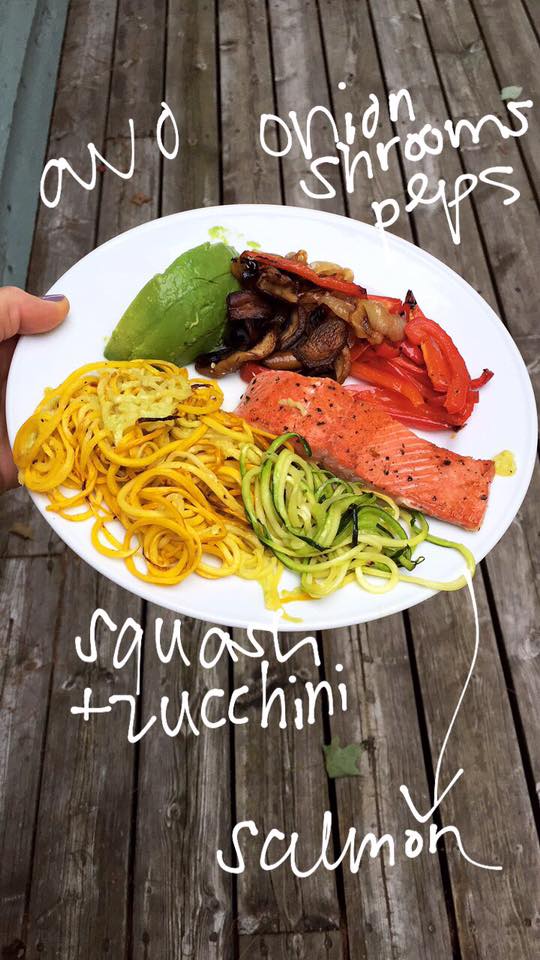

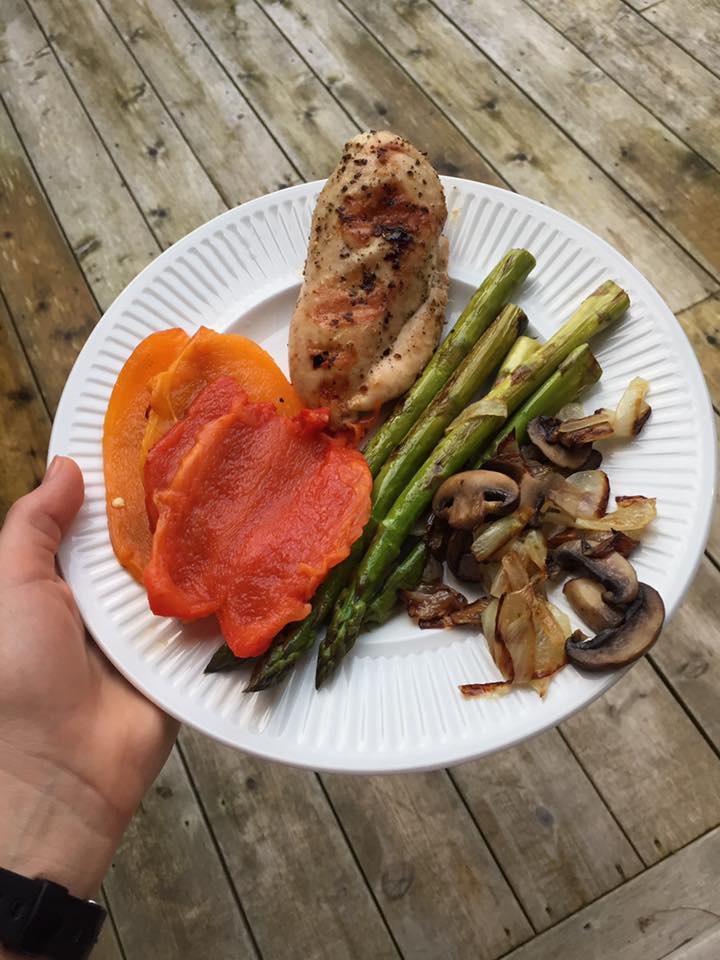



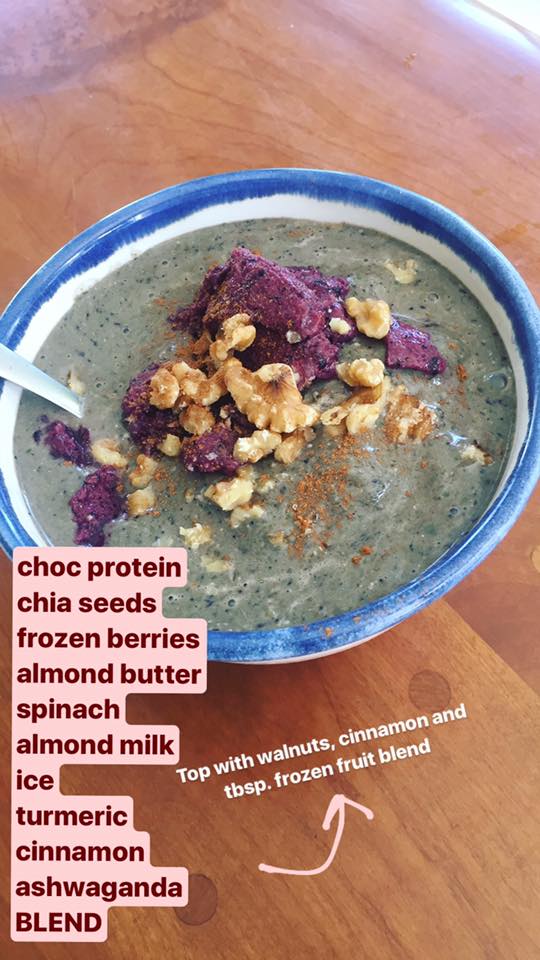

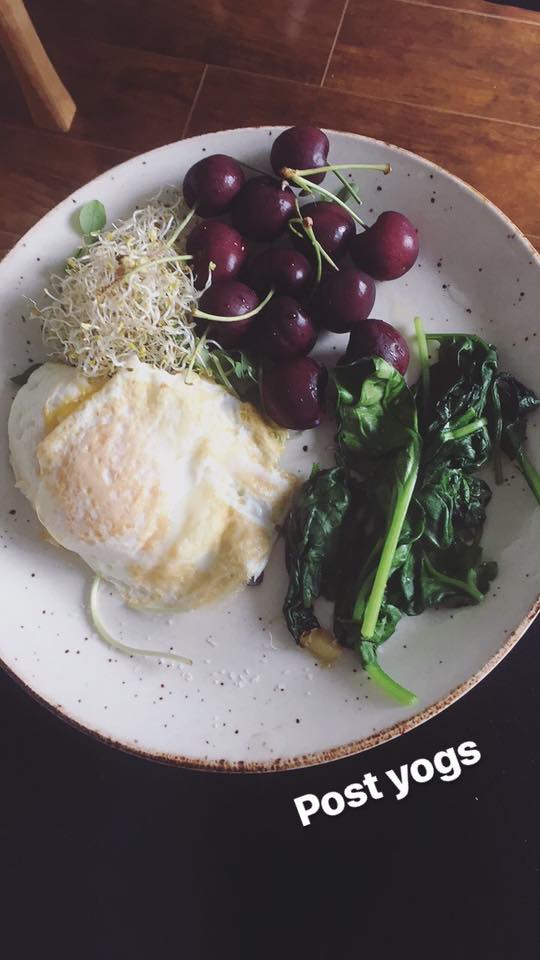
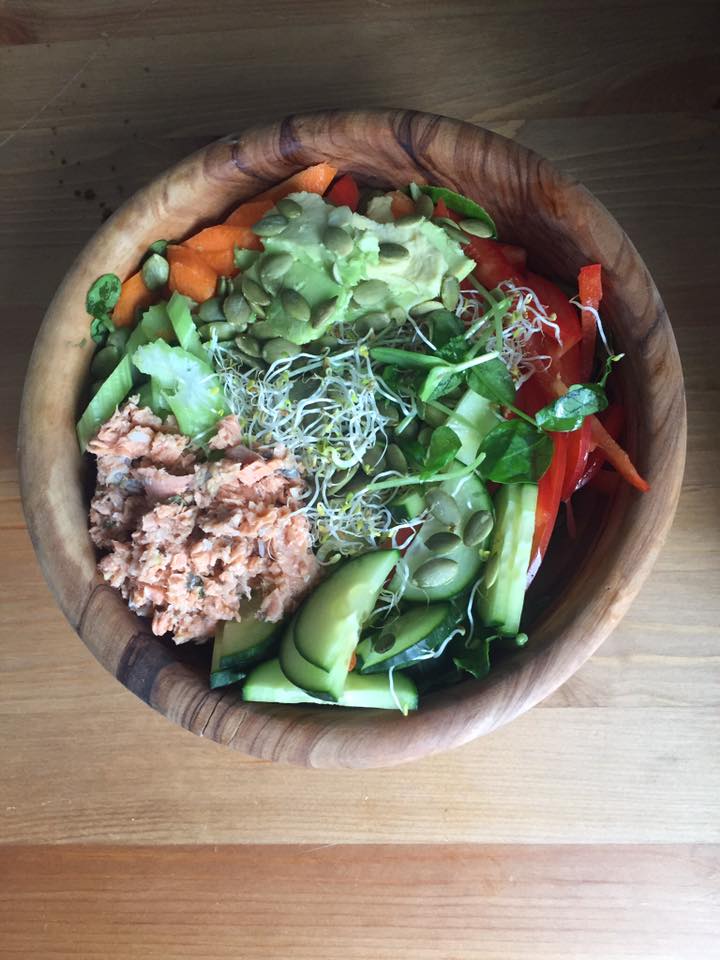











![[Healthy Habit] Add THIS to Your AM Routine to Improve Digestion, Skin & Gut Health](https://images.squarespace-cdn.com/content/v1/561ac47de4b0fcd88ca62390/1516659056766-V0QD5X6IBUFTUITDMSOY/warm-lemon-water-pink-himalayan-sea-salt.png)
